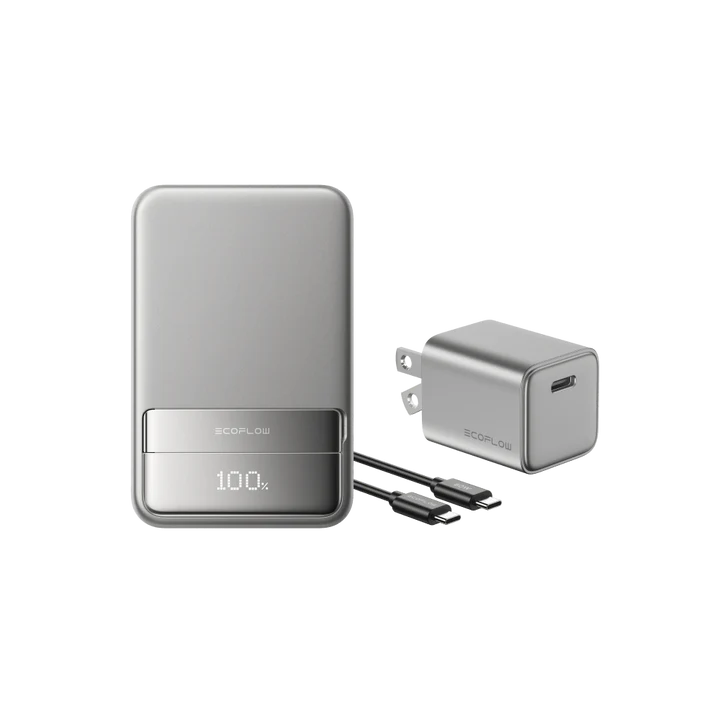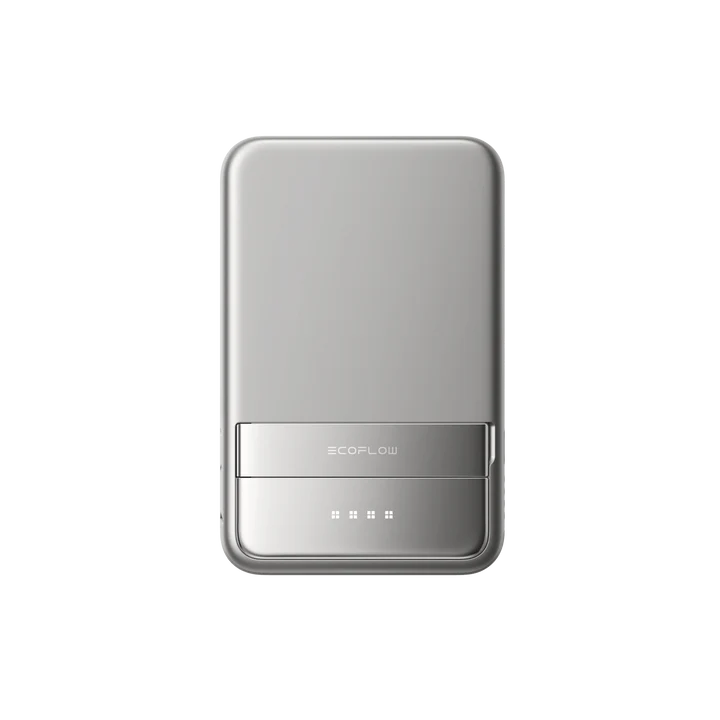Can a Power Bank Charge Any Phone?
In our super-connected lives, a dead phone battery can be a near disaster. A power bank charger seems like the perfect solution—a portable lifeline for your phone. But as you grab one from the shelf or online, a critical question arises: can this power bank charge any phone? The answer, while mostly yes, has some important details to bear in mind.
Can All Phones Use the Same Charger for Universal Power?
It would be great if all of our tech could be charged by a single charger. This has been the goal of the industry for years, and one big step toward it has been defining USB (Universal Serial Bus) ports. To put it simply, a power bank is a compact battery that has one or more USB ports. The USB port on your phone can also be used to charge it. In theory, this means that all power banks should be able to charge all phones.
This interoperability is by design. The whole idea of USB is to create a universal standard for connection and power transfer. When you connect your phone to a power bank, there is a communications process, sometimes called a "handshake," that occurs. The power bank signals that it has power to provide, and the phone requests a certain amount. In the simplest instance, the power bank will provide a standard 5-volt charge, which is enough to slowly charge up just about any modern smartphone. So if getting some juice into your phone is all you're looking for, just about any power bank charger will do the trick. But to get the best and fastest charge, there is a deeper level of compatibility needed.
What's Included in a Power Bank Compatibility Check?
Basic charging is almost universal, but a few things determine how effectively and speedily a power bank can charge your individual device. Overlooking these can result in frustratingly slow charging times or even an inability to charge at all in some uncommon instances. Consider filling a swimming pool using a garden hose—it will work eventually, but a high-pressure fire hose would be much better. To make sure you have the correct "hose" for your "pool," you should conduct a power bank compatibility check.
Physical Connector Types
The most immediate and obvious compatibility point is the physical connector. Over the years, phones have used several different types of charging ports.
USB-C: This is the modern standard for most Android phones and, as of late 2023, for Apple's iPhone lineup. It's a small, oval-shaped connector that is reversible, meaning you can't plug it upside down. Its adoption is a major step towards answering the question, "Can all phones use the same charger?" with a resounding "yes."
Lightning: This is Apple's proprietary connector, used on iPhones from the iPhone 5 up to the iPhone 14 series. It's a small, thin, reversible plug. If you have an iPhone from this era, you will need a power bank with a standard USB-A output port and a USB-A to Lightning cable, or a power bank with a USB-C output and a USB-C to Lightning cable.
Micro-USB: Before USB-C became dominant, this was the standard for most Android phones, as well as other gadgets like Bluetooth speakers and older power banks. It has a trapezoidal shape and can only be inserted one way.
The key takeaway is that you need a cable that bridges the gap between your power bank's output port (usually USB-A or USB-C) and your phone's input port.
Fast-Charging Protocols
Beyond physical connection, there's a digital conversation happening between your phone and the power bank. This conversation is governed by charging protocols, which are specialized technologies designed to deliver more power than the standard 5 volts for faster charging. The two most dominant protocols are:
- Power Delivery (PD): Primarily associated with USB-C, Power Delivery is an intelligent charging standard that can negotiate a much higher power output. It’s a versatile protocol used for charging not just phones, but also tablets, laptops, and other larger devices.
- Quick Charge (QC): Developed by Qualcomm, this technology is common in Android phones, especially those using Snapdragon processors. Like PD, it allows for higher power transfer to speed up charging times. There have been several versions of QC, each offering improvements in speed and efficiency.
If your phone supports one protocol and your power bank supports another, they will likely revert to a standard, slower charging speed. They speak different "languages," so they fall back on the basic communication they have in common. For the best performance, you want a power bank that speaks the same fast-charging language as your phone.


How Do Power and Capacity Affect Your Power Bank Charger?
Two numbers are crucial when evaluating a power bank charger: its capacity, measured in milliampere-hours (mAh), and its power output, measured in watts (W). Understanding these two specifications is key to choosing a device that meets your daily needs.
Battery Capacity (mAh)
Capacity informs you of the amount of energy that the power bank is capable of storing. The battery capacity of a phone is also quantified in mAh. So, for instance, if your phone has a 4,000 mAh battery and your power bank is 10,000 mAh, you should be able to get approximately two complete charges from the power bank (factoring in a bit of energy loss during transfer). The higher the mAh, the more charges before needing to recharge the power bank itself.
Power Output (Watts)
Power output, in watts (W), defines how quickly the power bank can supply that power. Wattage results from a product of voltage (V) and amperage (A). A typical USB-A port may provide 5W (5V×1A), which will trickle charge a modern phone slowly. A power bank with fast charging, though, may provide 18W, 45W, or more via its USB-C PD port. Your phone accepts power up to a specific wattage. Charging with a higher wattage power bank won't hurt your phone; the phone's internal circuitry will only accept the maximum power it is designed for.
What Are Some Universal Power Bank Tips for Compatibility?
Choosing a power bank that will work for all your current and future devices is a smart move. By keeping a few key features in mind, you can find a truly versatile and future-proof option. These universal power bank tips will help you make an informed decision.
Prioritize USB-C Power Delivery (PD): Since the industry is consolidating around the USB-C standard, a power bank with at least one USB-C PD output port is your best bet for universal compatibility. This ensures you can fast-charge the vast majority of modern smartphones and even other devices like tablets or headphones.
Look for Multiple Output Ports: A power bank with both USB-C and USB-A ports offers the best of both worlds. The USB-A port provides backward compatibility for older devices or cables, while the USB-C port covers all modern charging needs.
Check for Multi-Protocol Support: The most versatile power banks explicitly state that they support multiple fast-charging protocols, such as both Power Delivery (PD) and Quick Charge (QC). This makes them a great choice for households with a mix of different phone brands.
Consider a Wireless Charger Option: For maximum convenience, many modern power banks now include Qi wireless charging. If your phone supports it, a power bank that doubles as a wireless charger eliminates the need for cables entirely, offering a simple and universal way to top up your battery on the go.
Invest in Good Cables: A high-wattage power bank is useless without a cable that can handle the power. Ensure your cables are rated for the charging speeds you want to achieve. A cheap, low-quality cable can throttle charging speed and even be a safety risk.
Choose a Solution for Your Lifestyle: Your power needs might go beyond just your phone. Consider your daily routine and choose a power solution that matches it. The EcoFlow RAPID Power Bank (25,000mAh, 170W, 100W Built-In and Retractable Cables) is ideal for users who need a high-capacity, fast-charging solution for remote work, business travel, or daily life, offering integrated cables for multiple devices.


4 FAQs about Power Banks
Q1: Can a power bank damage my phone's battery?
A: In general, no. A good power bank from a well-known brand will not harm your phone. New smartphones have protection circuits built into them that prevent overcharging by controlling the amount of power they receive. The important thing is not to use very cheap, uncertified power banks, since they might not have the necessary safety features.
Q2: Can I take my power bank on an airplane?
A: Yes, but with limitations. Airline policy generally mandates power banks to be in your carry-on, not checked luggage. There is also a capacity restriction, generally 100 Watt-hours (Wh), which encompasses most consumer power banks up to around 27,000 mAh. Always confirm with your target airline prior to flight according to their current regulations.
Q3: Why is my power bank charging my phone so slowly?
A: Slow charging is usually caused by one of three things: a low-power output port on the power bank (e.g., a standard 5W USB-A port), a cable that isn't rated for fast charging, or a mismatch between your phone's and the power bank's fast-charging protocols (like PD or QC). To ensure top speeds, use a high-wattage port and a compatible, high-quality cable.
Q4: How many years will a power bank last?
A: The lifespan of a power bank is measured in charge cycles. Most modern power banks are designed to last for 300 to 500 full charge/discharge cycles. With average use, this translates to about 2-4 years. To maximize its lifespan, avoid storing it completely empty or fully charged for long periods and keep it away from extreme temperatures.
The Verdict on Universal Charging
So, will any power bank charge any phone? The short answer is yes, and the longer answer is yes, with the proper arrangement. In the tech world today, compatibility is not so much a matter of "if" as it is "how well." A recent power bank with a USB-C PD port will adequately and speedily charge just about any smartphone available for purchase today, rendering your charging anxieties a thing of the past.
For those looking for a reliable, high-capacity solution, the EcoFlow RAPID Power Bank (25,000mAh, 170W, 100W Built-In and Retractable Cables) offers fast, versatile charging for multiple devices at once—making it a perfect companion for work, travel, or everyday life.